
Sweetening Judgments by Entangling Divine Names
VeZot HaBerachah and the Hoshana Rabbah custom of striking the ground with willow twigs tl;dr Incense (ketoret) means “binding,” which we interpret as entanglement; the

VeZot HaBerachah and the Hoshana Rabbah custom of striking the ground with willow twigs tl;dr Incense (ketoret) means “binding,” which we interpret as entanglement; the
In many Ashkenazi communities, the day after Yom Kippur is nicknamed Gott’s Nomen, Yiddish for “G-d’s Name.” Chassidic sources associate the four days between Yom

Alexander Poltorak Abstract This essay addresses the anigmatic statement of the Jewish Sages, stating that G-d created this world with the letter Heh and the
By Alexander Poltorak Abstract The Torah portion of Shemini records the climactic eighth day of the Tabernacle’s dedication, the moment when divine fire finally descends.
By Alexander Poltorak “G‑d is a mathematician”Carl Friedrich Gauss I. Can We Prove that G-d created Axioms of mathematics? 1. Introduction A reader challenged me with a
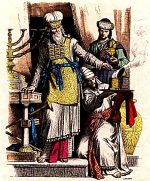
By Alexander Poltorak Dedicated to the refuah shaleimah (a complete and speedy recovery) of David ben Leah And thou shalt put in the breastplate of
By Alexander Poltorak This essay is dedicated to the Upsherenish of our dear grandson, Tzemach Asher Noam, Sheyiḥiyeh, which took place today in Houston. May
Abstract This essay explores the profound significance of the letter Bet (ב), the first letter of the Torah, and its numerical value of two as

This essay explores a novel parallel between quantum mechanical principles and the biblical creation narrative through etymological analysis of the Hebrew terms “erev” (evening) and
Abstract This essay explores the profound connections between language, philosophy, physics, and spirituality in the context of Rosh HaShanah. By examining the linguistic roots of
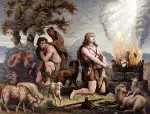
In his commentary on this week’s Torah Portion, Yitro, Rabbi Chayim Vital, writing in the name of his teacher, the Ari-zal, states that Abel was
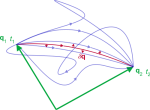
The spectacle of the universe becomes so much the grander, so much more beautiful, the worthier of its Author, when one knows that a small
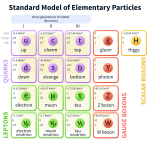
Introduction What could the Standard Model of particle physics possibly have in common with biblical accounts of the Israelites’ travels in the Sinai Desert, Kabbalistic

Einstein’s Special Theory of Relativity (STR) is broadly misunderstood by the public. In most popular science books, relativity theory is hailed for introducing relativity to
Structurally identical biblical accounts of creation, destruction, and restoration are viewed as a manifestation of dialectic triad thesis-antithesis-synthesis.

In the biblical story of the creation of Adam, the Torah states: Then the Eternal G‑d formed man of the dust of the ground, and
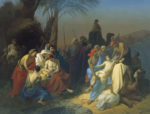
The confrontation between Joseph and his brothers is one of the most troubling stories of the Bible. Joseph and his brother—twelve sons of Jacob—were the
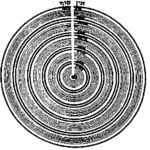
Sweeping Infinities Under the Rug—or Renormalization Having dealt with internal contradictions in the previous section (see Physics of Tzimtzum I — The Quantum Leap and

In the previous post “Physics of Tzimtzum I—The Quantum Leap”, we gave a general overview of the mystical doctrine of tzimtzum—the cornerstone of Lurianic Kabbalah.

Introduction “In the beginning G‑d created the heavens and the earth.” (Genesis 1:1) “In the beginning G‑d created the heavens and the earth,” the Torah

In the beginning, G‑d created the heaven and the earth…[1] (Genesis 1:1) Classical biblical commentators have given the first words of the Torah many

For the life of the flesh is in the blood.” (Leviticus 17:11) The word translated here as “life” in the Hebrew original is nefesh, i.e.,

And the Eternal G‑d said: “It is not good that the man should be alone; I will make him a helpmate opposite him.” (Genesis 2:18)

As we discussed in the previous post “Singularity and Paradise,” Paradise offers a beautiful metaphor for modern cosmology wherein Eden is the initial singularity preceding

Strings vibrate, Souls tremble, Angels are running and returning, G‑d is touching and not touching – The rhythms of the universe… Nothing stays still… all

Then drew near the daughters of Zelophehad …. of the families of Manasseh, the son of Joseph; and these are the names of his daughters:

Meditations on the Maaseh Merkavah – IV This is the fourth and the final installment in the series of posts related to Ezekiel’s prophesy, Ma’aseh
Meditations on the Maaseh Merkavah – III This is the third installment in the series of posts related to the Ezekiel’s prophesy, Maaseh Merkava, “The

Meditations on the Maaseh Merkavah – II This post is a sequel to my previous post, “Space – Between Future and Past.” For background information,
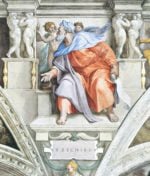
Meditations on the Maaseh Merkavah – I We do science by studying nature. We study physics in a lab, peering into space or working out

And ye shall take you on the first day the fruit of goodly trees, branches of palm-trees, and boughs of thick trees, and willows of
In my post, “Ye Shall be Disentangled,” I suggested that the verse: “Ye shall be holy, for I, the Lord, your G‑d, am holy” (Levit.
Welcome to the premiere of our first film, Quantum Torah. You can watch the film here: Don’t forget to subscribe to my channel here:
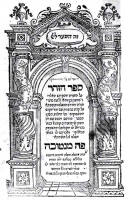
In the six hundredth year of Noah’s life, in the second month, on the seventeenth day of the month… all the fountains of the great

The months of Tishrei is full of holidays, and they all share a common theme—the unification of time—past, present, and future. It all starts with
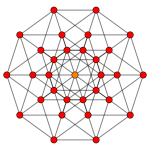
In my last post, Tisha B’Av on Shabbat – A Relativistic Perspective, I wrote that G‑d created His sanctuary in four dimensions — Bet HaMikdash

Continuing the theme of my last post, Mishkan – a Metaphor for Quantum Reality, the analogy between the Tabernacle (“Mishkan”) and quantum reality goes even

Ultimately, I suppose Einstein was right—G‑d does not play dice. So when Haman reached that spiritual level through casting the lots, he discovered the true

And thou shalt make two cherubim of gold; of beaten work shalt thou make them, at the two ends of the ark-cover. And make one

As I wrote in my post, Schrödinger Menorah: Burning And Not Burning, the Lubavitcher Rebbe, Rabbi Menachem Mendel Schneerson, explains the miracle of Chanukah as

The miracle of Chanukah revolves around a single-day-supply of olive oil burning for eight days during the rededication of the Holy Temple in Jerusalem (Bet

And he arrived upon the place and lodged there all night, because the sun was set; and he took from the stones of the place,
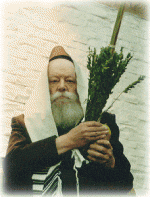
Albert Einstein had a lifelong quest—to develop a unified field theory—the theory that would describe as a single field gravity and electromagnetism (just as Maxwell
This post is a continuation and the conclusion of the previous post, THE FIFTH FORCE. Aside from the connection with the last week’s Torah portion,
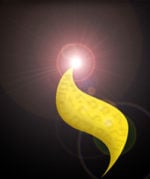
Now, therefore, write ye this song for you, and teach thou it the children of Israel.” (Deut. 31:19) The four known fundamental forces are: gravitational
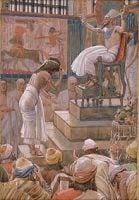
This week, we read in the Torah portion Vayigash (Gen. 44:18–47:27) about Joseph revealing himself to his brothers and Jacob coming to Egypt with his family. This
This post is a continuation of the earlier post, The End of Days I. In this Torah Portion, Shemot, we read about the encounter between
In this Torah portion, Vayechi, Jacob, gathers his children to reveal to them “Ketz HaYamim”–“the End of Days.” Rashi explains that Jacob’s intention was to

I grew up in Russia and was raised on the metric system based on decimal arithmetic. When we immigrated to the U.S., I had to
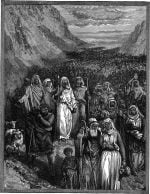
These are the journeys of the children of Israel… (Numbers 33:1) When G-d brought the Jews out from Egypt, He brought them out with the mystery of
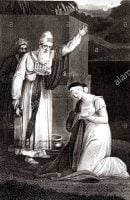
The story of Sotah, a suspected adulteress, is very troubling on the first blush. Why would a woman be subjected to such humiliation? The Lubavitcher
Ye shall be holy, for I, the Lord, your G‑d, am holy. Leviticus 19:2 This Torah portion begins with an astonishing statement: Speak unto all
On Seder night we drink four cups of wine and eat three matzoth. Why four cups and not three? Why three matzoth and not four?
The holiday of Passover – Pesach – is called zman cheruteinu– time of our freedom. As we have discussed many times on this blog (see

Today is Rosh Chodesh Adar Bet – the New Moon and the beginning of the second month of Adar. If we ever to have a month
Reading the Haftorah this Shabbat brought to mind scenes from the 2004 Republican National Convention in Madison Square Garden in New York City where attendees where
And let them make me a Sanctuary that I may dwell among them (Ex. 25:8) In modern physics, there are two paradigms usually expressed as locality
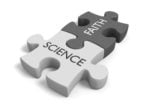
The Torah portion of Yitro (Ex. 18), is the high point of the story of Exodus—the giving of the Decalogue on Mount Sinai. In a strange
Bo: Exodus 10:1 – 14:16 The Erev Shabbat parshat Bo (the Eve of Sabbath of the week when we read the Torah section Bo) 2014

It is unsurprising, then, that spiritual phenomena have never been experimentally detected in a laboratory setting. Spirituality, by definition, is non-physical. Consequently, no physical laboratory
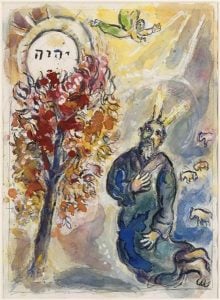
…And behold, the thorn bush was burning with fire, but the thorn bush was not being consumed.” (Ex. 3:2) Every theologian worth his salt along
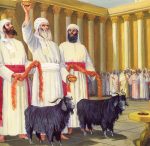
Some people may be fooled by randomness but, when we realize that randomness opens the door to the Divine, we are saved by randomness. It
I came across a post by Rabbi Herzl Hefter on Mekom Torah that I found so profound, I felt compelled to repost it here. The
B’reshit bara Elokim et hashamaim v’et haaretz… In the beginning, G‑d created heaven and earth… Alternative translation: With two beginnings G‑d created heaven and earth…